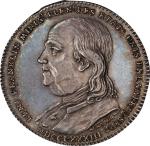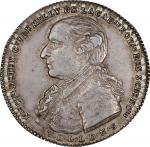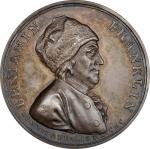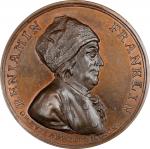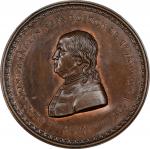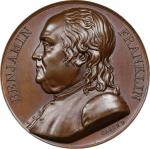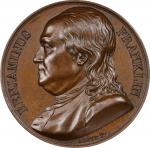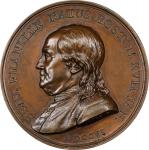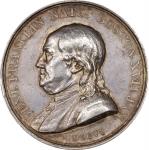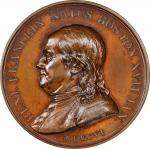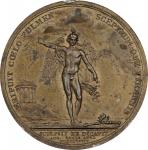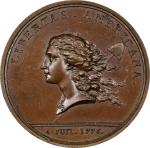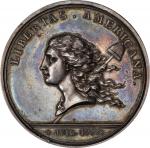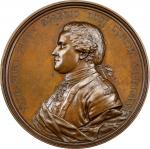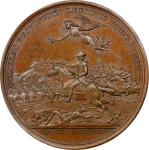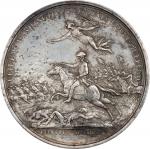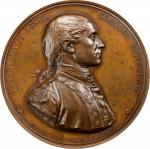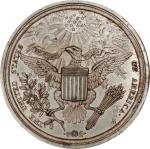1776 (1792) United States Diplomatic Medal Obverse Cliche. Loubat-19. Tin (white metal), 69 mm. MS-63 (PCGS). 692.6 grains. Backed with plain laid paper inscribed "4 Juillet 1776." Mr. Margolis had done enough work in the archives of France and the United States to recognize this as Dupres penmanship. Firmly struck and perfectly centered, neatly trimmed to ideal and attractive roundness. The surfaces are smooth, even subtly lustrous, with natural fissures seen below the arrows and at the upper left quadrant. We note no flaws or detractions that followed this pieces creation on the desktop of Augustin Dupre himself. <p><p>A singularly important artifact, an impression from the adopted obverse of this first medal conceived by the United States after the American Revolution. Designed by Thomas Jefferson, personally approved by George Washington as president, and engraved by Augustin Dupre, the Diplomatic Medal is as central to our early diplomatic history as it is damnably forgotten by modern scholars and numismatists. Conceived in 1790 by Jefferson, George Washington described it in his diary as, "the present which (according to the custom of other nations) should be made to Diplomatic characters when they return from that employment in this country, and this was a gold Medal, suspended to a gold chain -- in ordinary to be of a value of about 120 or 130 guineas." This large gold medal was inspired by similarly lavish and high value gifts then given by European rulers to visiting diplomats, a habit Jefferson may have learned about from John Adams, who received a similar large gold medal from the Netherlands, today in the collection of the Massachusetts Historical Society. Though four of the original gold medals appear to have been struck in Paris in 1792, none are known to have survived, and none has ever been documented by numismatists in this century or any previous. <p><p>Though two obverse dies were made, impressions are only known from the obverse die exemplified here; the other is known solely from the cracked die now in the collection of the Boston Public Library. Aside from the three bronze pieces, the Adams-Bentley work on Comitia Americana medals (the most complete source for information on the Diplomatic Medal) enumerates eight known splashers from this die. Three are ex: Ford (including this one), and one other is in private hands, for a total of four collectible specimens. The others are in the collections of the American Numismatic Society, the American Philosophical Society, the Massachusetts Historical Society, and the Smithsonian Institution.<p><p>We have not offered one of these since the August 2012 Dorchester Heights sale, when we sold the Bushnell-Garrett-Ford specimen. None of these were in the Adams Collection, though he did own two different reverse cliches. One of the Adams cliches is now in the collection of the American Numismatic Society. From the Richard Margolis Collection. Earlier found in an old safety deposit box before 1953, believed ex Wayte Raymond; our (Stacks) sale of the John J. Ford, Jr. Collection, Part V, October 2004, lot 199.


